NIL
Possible Trump Executive Order on NIL Reform Would Face Legal Challenges
After meeting with former University of Alabama football coach and seven-time national champion Nick Saban, President Trump is considering forming a college sports commission and issuing an executive order to establish national standards for name, image, and likeness (NIL)—an umbrella term that includes how college athletes can earn compensation based on their personal brand and […]
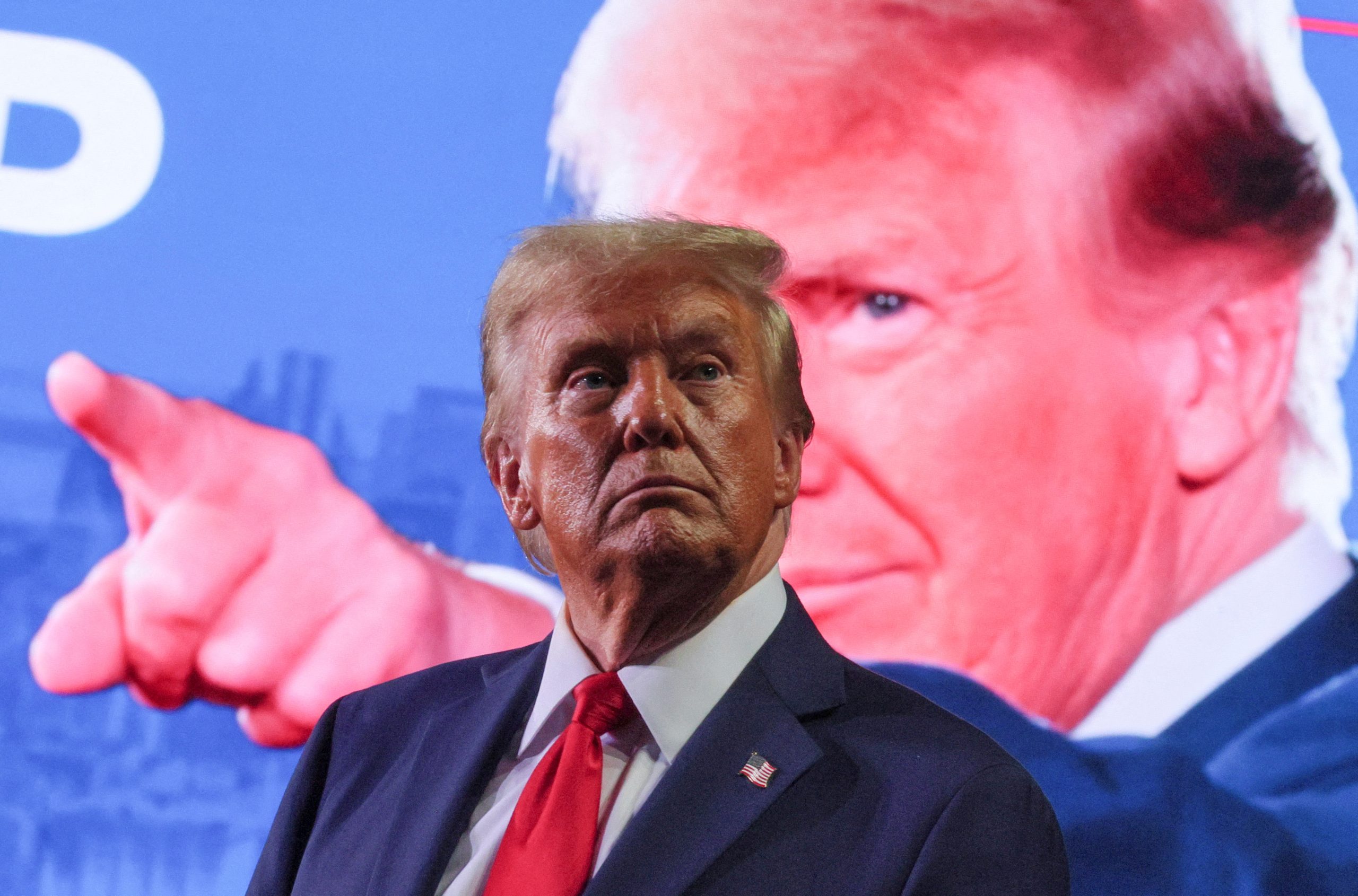

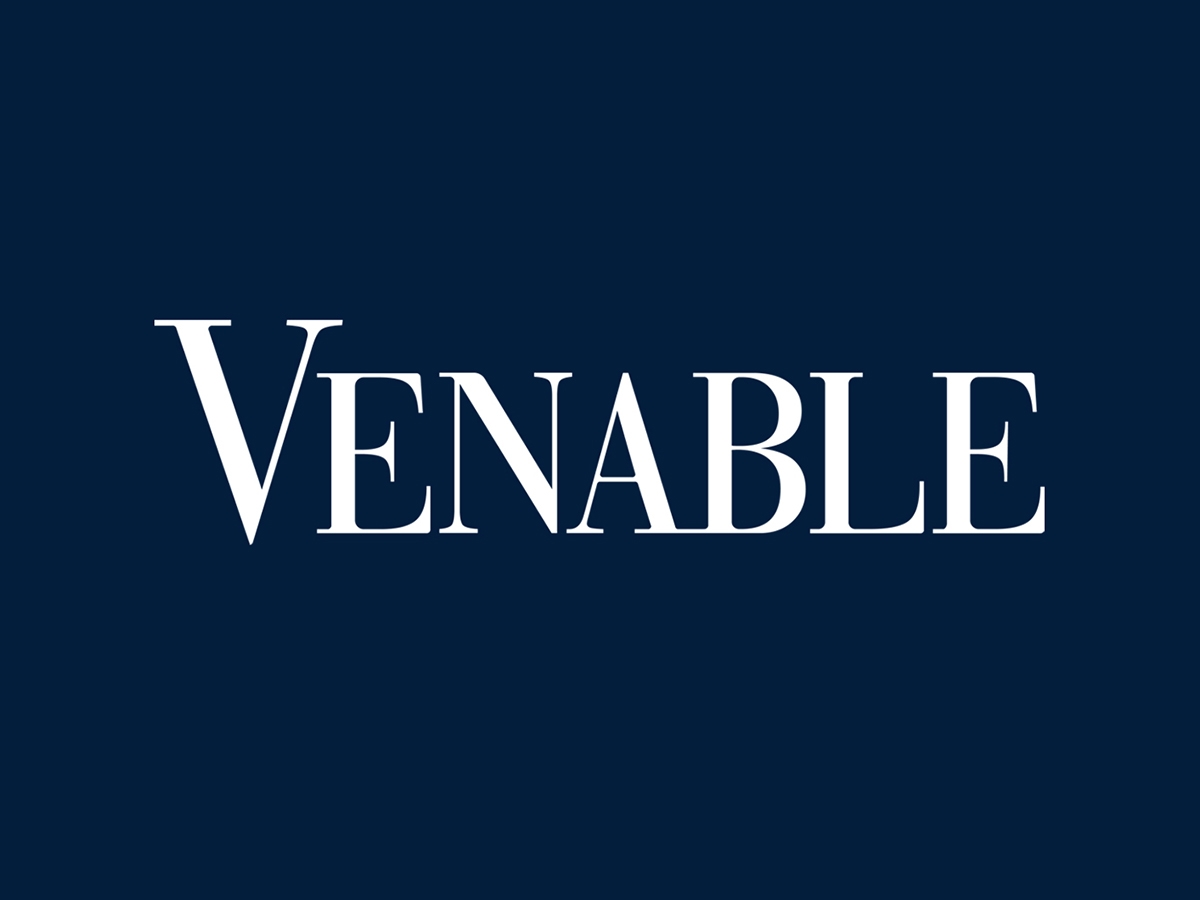
After meeting with former University of Alabama football coach and seven-time national champion Nick Saban, President Trump is considering forming a college sports commission and issuing an executive order to establish national standards for name, image, and likeness (NIL)—an umbrella term that includes how college athletes can earn compensation based on their personal brand and public recognition.
Saban expressed concerns about the current NIL landscape creating an uneven playing field among schools due to disparities in financial resources, especially among powerhouse programs, as well as inconsistencies in NIL laws across different states. Trump was receptive to Saban’s concerns. However, an executive order seeking NIL regulations faces challenges.
For example, many states have enacted their own NIL laws, which are rooted in state right-of-publicity laws. So far, state NIL laws have been very generous toward athletes and have generally removed restrictions on the amount an athlete may earn from NIL. There are currently no federal right-of-publicity laws, and there is no sign that Congress will pass legislation that will explicitly preempt state NIL laws. Thus, an executive order from the Trump administration would at most help set national guidelines for NIL—it would not have the power to override state laws that conflict with those guidelines.
Similarly, an executive order limiting NIL might conflict with state labor and employment laws. For example, in the closely watched Johnson v. NCAA case pending in the U.S. District Court for the Eastern District of Pennsylvania, athletes are pursuing employee status not only under the federal Fair Labor Standards Act (FLSA), but also under various state wage laws in Connecticut, Pennsylvania, and New York. An executive order limiting NIL compensation would have no authority to preempt or alter these state-specific laws, which are governed by each state’s legal framework.
Additionally, Title IX might be implicated by an executive order regulating NIL. Title IX mandates that male and female athletes at federally funded educational institutions receive equitable treatment in benefits and opportunities. While NIL compensation is typically provided through private deals, this will change under the proposed House v. NCAA settlement if approved, which will allow schools to make payments directly to athletes. If an executive order is perceived to result in any sex-based disparities in school-facilitated NIL or revenue-sharing opportunities, it could trigger legal challenges under Title IX.
A Trump Executive Order Goes Only So Far
NCAA president Charlie Baker has publicly expressed openness to executive action. However, an executive order from the Trump administration will not provide the NCAA with what it truly desires—an antitrust exemption from Congress. The NCAA has long sought an antitrust exemption from Congress that would have the potential to shield it from antitrust litigation, a necessary step to preserve the NCAA’s notion of “amateurism.” Courts have grown increasingly skeptical of the NCAA’s efforts to preserve amateurism, as seen with the outcomes of landmark cases such as O’Bannon v. NCAA and NCAA v. Alston. These cases reflect a broader judicial trend toward scrutinizing NCAA policies under traditional antitrust principles. By obtaining an antitrust exemption, the NCAA could effectively remove these questions from judicial review, placing the authority to define and validate its amateurism framework in the hands of Congress.
An executive order from the Trump administration is better than nothing, but it still leaves the NCAA exposed. An executive order can direct federal agencies, shape enforcement priorities, and clarify regulatory interpretations, but it cannot override existing laws, such as the Sherman Antitrust Act. In other words, even if an executive order expressed support for the NCAA’s amateurism model and restricted NIL compensation, it would have no binding effect on the judiciary. Courts will still be obligated to apply the Sherman Act as written.
In short, while there may be compelling reasons to attempt to bring order to the complex world of college athlete compensation, addressing NIL through an executive order is likely to face significant challenges, particularly if it fails to account for the intricate legal and regulatory issues underlying the current system. And it likely will not bring an end to the NCAA’s legal challenges.
NIL
IMG Academy Is Now Preparing Athletes to Manage Potential NIL Riches Which Await on the College Level
IMG Academy prides itself on preparing its student-athletes for success on the next level and even beyond. In addition to elite training for their given sport, and the education to thrive as a college student, the Bradenton, Florida athletic powerhouse has begun prepping its students to meet the changing Name, Image and Likeness (NIL) landscape […]
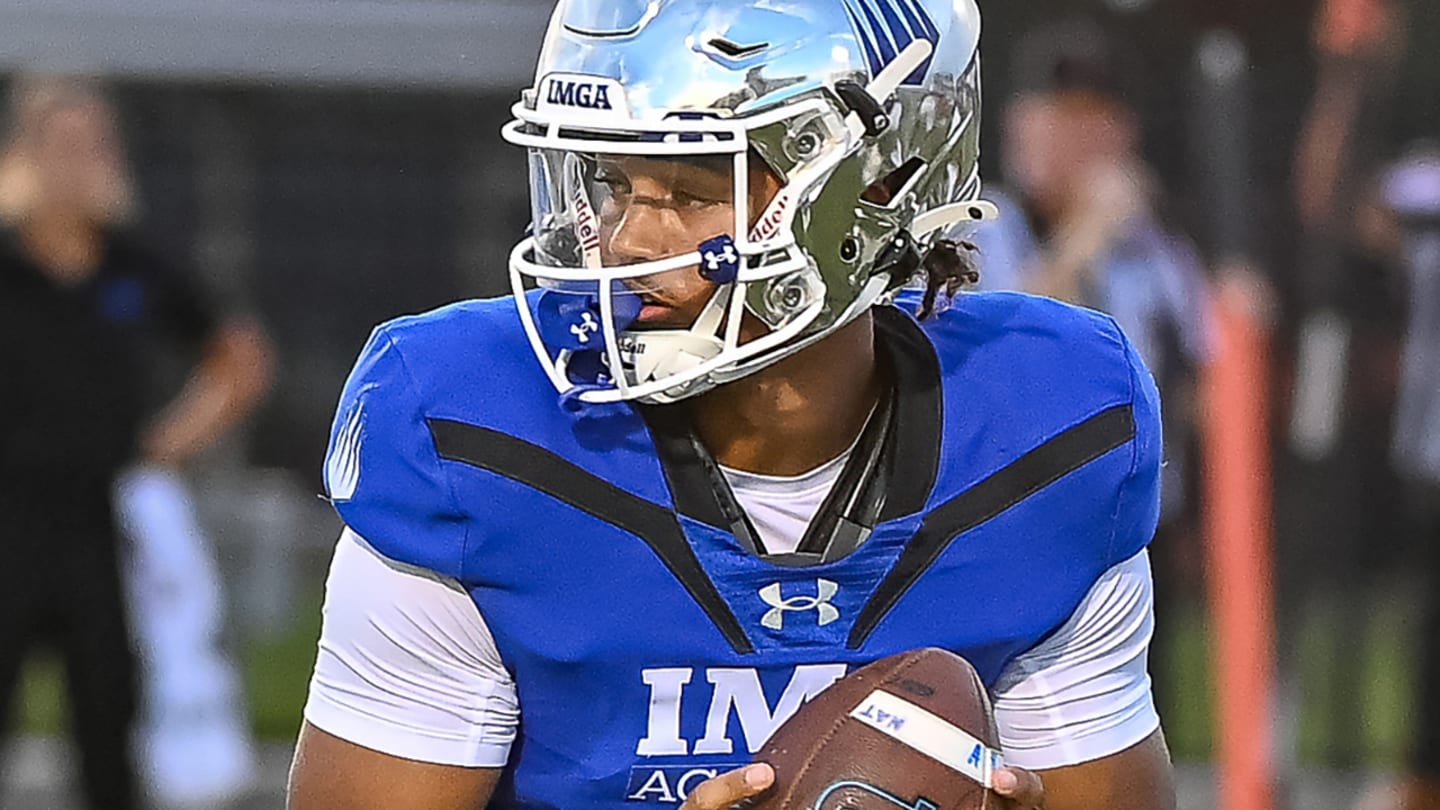
IMG Academy prides itself on preparing its student-athletes for success on the next level and even beyond. In addition to elite training for their given sport, and the education to thrive as a college student, the Bradenton, Florida athletic powerhouse has begun prepping its students to meet the changing Name, Image and Likeness (NIL) landscape of big time college sports.
Specifically, IMG has begun offering guidance on how NIL revenue sharing will impact the finances of the elite athletes, fortunate enough to receive those offers.
Until recently, NIL meant athletes had the right to negotiate marketing deals to profit from the use of their name, image and likeness. As of July 1, however, every Division 1 school will have the ability share up to $20.5 million of its annual revenues with its student athletes, in the form of direct payments.
This landmark change is a result of last year’s settlement between the NCAA and it’s conferences with plaintiffs in three different class action lawsuits. The settlement, which received final approval earlier this month, may result in a loss of college opportunities for some high school student-athletes. For elite athletes, similar to those spread throughout IMG’s sports teams, the opportunity to make life-altering earnings as a college athlete have never been greater.
“This moment in time for someone being at IMG Academy is exciting,” Kyle Brey, IMG’s director of football, recently told The Destin Log. “It’s not intimidating. This is a chance for us to flex a muscle that makes us different.
“We are the only high school on the planet that has the resources to be as far ahead of these conversations as we are. And when the landscape changes is when our resources really get challenged. And that’s when we can step up.”
According to the Destin Log report, IMG’s vice president of athletics, Brian Nash, said the school has been consulting with colleges in preparation for this moment, for more than a year. The school has also enlisted the services of outside professionals to provide advice for athletes transitioning to this new era of college athletics, while helping IMG administrators be better prepared to help their student athletes.
“If you don’t bring these people to campus and you don’t share the messaging with the kids, they’re definitely behind the eight-ball,” Nash said to the Destin Log. “To me, the kids were excited for them to come to campus because they knew that they were getting something that kids at other schools weren’t getting.”
NIL
More college stars staying put
INDIANAPOLIS (AP) — Will Wade’s work building N.C. State into an immediate winner included the pursuit of an entrant in the NBA draft, just in case he returned to college. It wasn’t a huge risk: With all the cash flowing in college, the number of early entrants to the NBA draft has continued to shrink. […]
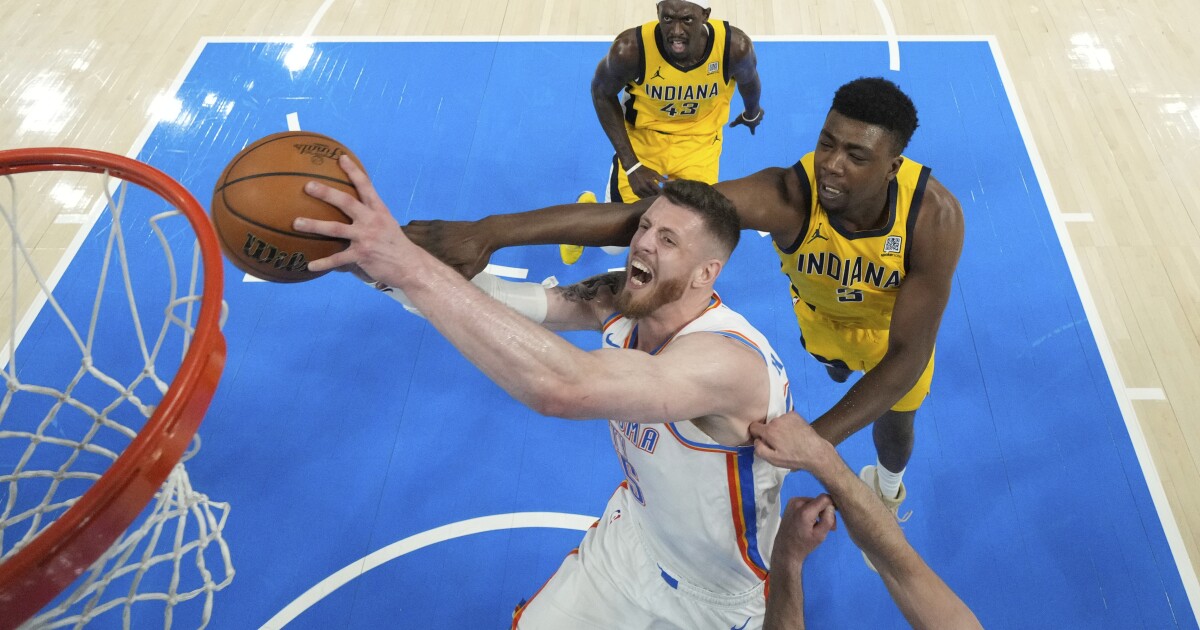
INDIANAPOLIS (AP) — Will Wade’s work building N.C. State into an immediate winner included the pursuit of an entrant in the NBA draft, just in case he returned to college.
It wasn’t a huge risk: With all the cash flowing in college, the number of early entrants to the NBA draft has continued to shrink. This year’s draft starts Wednesday night with its lowest total of those prospects in at least 10 years.
“Now you can play the long game a little bit more,” Wade told The Associated Press, referring to how college players can look at their futures. “Look, I can get paid the same I would get paid in the G League, the same I would get paid on a two-way (contract), some guys are getting first-round money.”
And more money is on the way.
It’s been four years since college athletes were permitted to profit off the use of their name, image and likeness (NIL), opening the door for athlete compensation that was once forbidden by NCAA rules. Next week, on July 1, marks the official start of revenue sharing where schools can begin directly paying athletes following the $2.8 billion House antitrust settlement.
For Wade, that led to signing Texas Tech’s Darrion Williams after 247sports’ fifth-ranked transfer withdrew from the draft.
“Basically now if you’re an early entry and you’re not a top-20, top-22 pick — where the money slots — you can pretty much make that in college,” the new Wolfpack coach said.
It’s all part of a seismic change that has rippled through college athletics since the pandemic, its impact touching the NBA. Players willing to “test the waters” in the draft before returning to school now have a lucrative option to consider against uncertain pro prospects.
And it shows in the numbers.
“With all the money that’s being thrown around in NIL, you’re having a lot less players put their names in,” Detroit Pistons president of basketball operations Trajan Langdon said. “You’re having pretty good players pulling their names out.”
Declining number of early entrants
This year’s drop is significant when compared to the years before anyone had heard of COVID-19. There was a spike of college players jumping into the draft in the pandemic’s aftermath, when they were granted a free eligibility year to temporarily make even a fourth-year senior an “early” entrant.
But those numbers had fallen as those five-year players cycled out of college basketball, and they’re now below pre-pandemic levels. That decline coincides with NIL’s July 2021 arrival, from athletes doing paid appearances or social-media endorsements to boosters forming collectives offering NIL packages amounting to de facto salaries.
As a result:
— Eighty-two players appeared on the NBA’s list of early entrants primarily from American colleges with a smattering of other teams, down 49% from 2024 (162) and nearly 47% compared to the four-year average from 2016-19 (153.5);
— Thirty-two remained after withdrawal deadlines, down from 62 last year and 72.0 from 2016-19;
— Adding international prospects, 109 players declared for the draft, down from 201 last year and 205.0 from 2016-19;
— And only 46 remained, down from 77 in 2024 and 83.8 from 2016-19.
More college players weighing options
Duke coach Jon Scheyer understands draft dynamics, both for no-doubt headliners and prospects facing less clarity. He sees college athlete compensation as a “legitimate gamechanger.”
“Hopefully it allows players to decide what’s truly best for their game,” Scheyer told the AP. “It allows them to analyze: ‘Am I actually ready for this or not?’ Where money doesn’t have to be the deciding factor. Because if money’s the deciding factor, that’s why you see kids not stick. The NBA’s cutthroat. It just is.”
The Blue Devils are expected to have three players selected in the first-round Wednesday, including presumptive No. 1 pick Cooper Flagg alongside top-10 prospects Kon Knueppel and Khaman Maluach. They also had players sorting through draft decisions.
Freshman Isaiah Evans — a slender wing with explosive scoring potential — withdrew instead of chasing first-round status through the draft process. Incoming transfer Cedric Coward from Washington State rapidly rose draft boards after the combine and remained in the draft.
“There’s no substituting the money you’re going to make if you’re a top-15, top-20 pick,” said Scheyer, entering Year 4 as successor to retired Hall of Famer Mike Krzyzewski. “But if you’re not solidified as a first-round pick, why risk it when you can have a solid year and a chance to go up or be in the same position the following season?”
College compensation is re-shaping the draft pool
Langdon, himself a former Duke first-rounder, sees that evolution, too.
His Pistons had their first playoff appearance since 2019, but lack a first-round selection and own a single pick in Thursday’s second round. Fewer candidates could make the already imperfect science of drafting even trickier in this new reality.
According to the NBA’s 2024-25 rookie scale, a player going midway through the first round would make roughly $3.5 million in first-year salary. That figure would drop to about $2.8 million at pick No. 20, $2.3 million at No. 25 and $2.1 million with the 30th and final first-round draftee.
A minimum first-year NBA salary? Roughly $1.2 million.
“These NIL packages are starting to get up to $3 to $4 to $5 to $6 million dollars,” Langdon said. “These guys are not going to put their name in to be the 25th pick, or even the 18th pick. They are going to go back to school in hopes of being a lottery pick next year. With that pool of players decreasing, it kind of decreases the odds of the level of player we get at No. 37, just the pure mathematics.”
Current NBA players offer insight
Indiana Pacers big man Thomas Bryant and Oklahoma City Thunder counterpart Isaiah Hartenstein, who both played in the seven-game NBA Finals that ended Sunday, illustrate Langdon’s point.
They were back-to-back second-rounders in 2017 (Bryant at 42, Hartenstein at 43), pushed down a draft board featuring early-entry college players in 33 of the 41 picks before them.
Bryant played two college seasons at Indiana before stints with five NBA teams, including Denver’s 2023 championship squad. Would the ability to make college money have changed his journey?
“To be honest, I see it from both sides,” Bryant said. “If you’re not going to get drafted, you understand that a kid needs money to live in college and everything. So, I understand where they’re coming from on that end.
“But for me, I took the chance. I bet on myself, and I believed in myself, and I worked to the very end. And the thing about me is that if I went down, I was going down swinging. I hang my hat on that. For some, it might not be the same case.”
The American-born Hartenstein moved to Germany at 11 and played in Lithuania before being drafted. As he put it: “I think everyone’s journey is different.”
“I think you should have the right people around you to kind of guide you,” said Hartenstein, a newly minted NBA champion. “I mean, I was lucky that my dad, who was a professional before, kind of guided me. Depending on your circumstances, it’s hard to turn down guaranteed money. If there’s an opportunity to get in a good situation in the NBA, you do that. But it’s a hard decision.”
College now can be more of an allure
At N.C. State, Wade’s pitch to Williams included a leading role and a shot at boosting his draft stock.
The 6-foot-6 junior averaged 15.1 points with multiple big NCAA Tournament performances as the Red Raiders reached the Elite Eight, nearly beating eventual champion Florida.
“He was most likely going to be a second-round draft pick, and his package here is better than probably he would’ve gotten as a second-round pick,” Wade said, adding: “We certainly talked about that. We went over that. We went over the math of everything. We went over the plan on how to accomplish that.”
That’s not to say it’s easy at the college level in this new landscape. Roster management is tricky, including a balancing act of maintaining financial resources to potentially land one player while risking missing out on others.
“It’s the way life works, it’s the way it should work,” Wade said. “If there’s no risk, there’s no reward. The riskiest players, in terms of waiting on the money and waiting them out, are the best players. That’s why they’re in the draft process. We’re not going to be scared of that.”
Nor should he, not with the allure of campus life these days.
NIL
Jay Johnson believes LSU made College World Series thanks to roster of ‘future Major League players’
Two out of the last three national championships call Baton Rouge home. LSU once again reached college baseball’s mountaintop on Sunday, taking down Coastal Carolina in two games. Jay Johnson is building something special at LSU, potentially being on the cusp of a dynasty. LSU has put together special rosters in Johnson’s tenure, even in […]

Two out of the last three national championships call Baton Rouge home. LSU once again reached college baseball’s mountaintop on Sunday, taking down Coastal Carolina in two games. Jay Johnson is building something special at LSU, potentially being on the cusp of a dynasty.
LSU has put together special rosters in Johnson’s tenure, even in years where expectations fell short. He believes one aspect of team building trumps all — making sure future Major League talent is present.
“I don’t think you can get to Omaha anymore, even, unless you have future Major League players on your roster,” Johnson said Monday on The Paul Finebaum Show. “And our team certainly does. Had the No. 1 overall pick in Paul Skenes and very well may have the No. 1 pick again this year with Kade Anderson.”
Going back to the 2023 team, where Johnson mentioned Skenes as the No. 1 overall pick. Outfielder Dylan Crews heard his name called one pick later by the Washington Nationals. Pitcher Ty Floyd was a first-round Competitive Balance Round A selection as well of the Cincinnati Reds. In total, 13 Tigers were taken in the 2023 MLB Draft after winning the national championship.
As for how many LSU players will hear their name in the upcoming 2025 MLB Draft is yet to be seen. Anderson does have a fantastic chance of being the top pick, once again with the Nationals. His Game 1 performance against Coastal Carolina only strengthens the cause thanks to a 130-pitch complete game shutout.
In the latest MLB Mock Draft from ESPN, only right-handed pitcher Anthony Eyanson features inside the top 40 besides Anderson. This year’s LSU bunch might have some catching up to do if there is going to be any kind of competition with the 2023 squad.
But Johnson’s overall point remains true. LSU made runs to Omaha due to the talent on their roster. And then, once at the College World Series, those players performed at the highest level and helped the program win a national championship.
Now, the goal to replace said talent will be the challenge for Johnson. Not many programs recruit at as high a level, both in the high school ranks and out of the NCAA transfer portal, as LSU. A place where the goal every single season is to make the CWS, Johnson has a good bit of Major League talent to find ahead of the 2026 season.
NIL
Former College Basketball players who should not have entered tonight’s NBA Draft
The NBA Draft kicks off tonight, and many former college basketball players will hear their name called and receive a multi-year contract with a significant signing bonus. But in the age of NIL, the determination of whether it’s worth leaving college to enter the draft is a bit more complicated. The NCAA to NBA pipeline […]

The NBA Draft kicks off tonight, and many former college basketball players will hear their name called and receive a multi-year contract with a significant signing bonus. But in the age of NIL, the determination of whether it’s worth leaving college to enter the draft is a bit more complicated.
The NCAA to NBA pipeline has changed rapidly over the last few decades. The traditional, typical journey included playing multiple years in college before entering the NBA Draft (aside from high school phenoms like LeBron James and Kobe Bryant). But as high school basketball improved, college basketball was introduced to the “1-and-done” freshmen.
As the discussion over whether colleges were exploiting athletes intensified, “developmental leagues” such as Overtime Elite and G League Ignite were born. Both leagues were able to recruit top talent in recent years, including Jalen Green, Dyson Daniels, Ron Holland, Scoot Henderson, Alex Sarr, and Rob Dillingham (pre-Kentucky).
And then the landscape changed even more drastically: the NIL era began. College players could now profit off of their name, image, and likeness, which effectively ended the G League Ignite and diminished Overtime Elite.
The “1-and-done” culture is still prevalent for the freshmen who are guaranteed lottery picks, but we’ve started to see more and more stud freshmen opt to stay in college for another year. Auburn’s Tahaad Pettiford opted to return despite getting 1st round NBA Draft looks, while Boogie Fland opted to transfer to Florida instead of taking his chances with the draft.
Fland’s compensation was reportedly worth over $2 million, which makes it quite comparable to expected NBA draft compensation for the back of the 1st round. After Pick 24, all annual salaries are below $3 million.
All this being said, let’s take a look at a few NBA prospects who could have benefitted from another year in college. Based on the latest nbadraft.net Mock Draft, here are a few players who had remaining college eligibility:
- Drake Powell: Freshman, North Carolina (projected #27)
- Danny Wolf: Junior, Michigan (projected #31)
- RJ Luis: Junior, St. John’s (projected #47)
All three of these guys left top college programs, all of which have reloaded for this upcoming season. Per 247 Sports, St John’s and Michigan have the top 2 ranked transfer class hauls in the nation, while UNC has the 7th best overall class (HS recruits + transfers).
If Powell, Wolf, or Luis returned to their respective programs, they would arguably become the favorites to cut down the nets next March. And more importantly, all three universities would’ve had the NIL funds to compensate them handsomely.
NIL
Report: NCAA denied LSU baseball players walkup songs by Kanye West at College World Series
Two LSU baseball players ran into issues at the College World Series after requesting to play walkup songs by artist Kanye West. According to Jacques Doucet of WAFB-TV, outfielder Derek Curiel was told he had to play the instrumental version of “God Is” from West’s album “Jesus is King” rather than the one with lyrics. […]

Two LSU baseball players ran into issues at the College World Series after requesting to play walkup songs by artist Kanye West. According to Jacques Doucet of WAFB-TV, outfielder Derek Curiel was told he had to play the instrumental version of “God Is” from West’s album “Jesus is King” rather than the one with lyrics.
Similarly, pitcher Kade Anderson was denied the chance to play “All of the Lights” from West’s “My Beautiful Dark Twisted Fantasy” album as his walk-out song. Curiel expressed his dismay that he was not allowed to play the song he wanted.
“I’m a little upset that the NCAA didn’t allow that song to be played,” he said. “They only played the instrumental version. They didn’t let the words play. But it’s OK. ‘God is everything that has breath. Praise the Lord.’ That’s a verse in the bible and I just wanted everyone to know. You worship Chris and that’s what I’m here to do and I want people to know me as the guy who plays baseball who loves Jesus.”
Initially, Curiel was not sure whether his song choice was denied because of the artist or because of its religious content. But Doucet later confirmed through his sources that it was due to West being the artist.
Of course, Kanye West has found himself at the center of controversy numerous times in recent years. The rapper has promoted antisemitic views both on social media and in his music and businesses. Although he grew a large fan base in the early 2000s through his music, his recent behavior has resulted in several of his former fans choosing to no longer support him.
That perhaps can explain the reasoning behind the decision from those in charge at the College World Series not to allow LSU players to play Kanye West’s music. Either way, it didn’t seem to affect them all that much on the field as they reeled off back-to-back victories against Coastal Carolina to claim the national championship.
That included a 5-3 victory on Sunday to finish things off in which Curiel tied for the team lead with two RBI. As he said, he isn’t all that worried about not getting the song he wanted for his walkup, and he’ll surely take a trophy over that any day. But it still certainly makes for an interesting story given all the attention on West of late.
NIL
NIL and transfers irk Ron DeSantis, who yearns for the glory days of college sports in Florida
Name, image and likeness (NIL) compensation and the transfer portal in major college sports continue to perturb Florida’s Governor. During comments at the University of South Florida College of Medicine in Tampa, Gov. Ron DeSantis reminisced about the way it used to be during the golden era of college football in Florida. “It’s tough. I mean, with […]
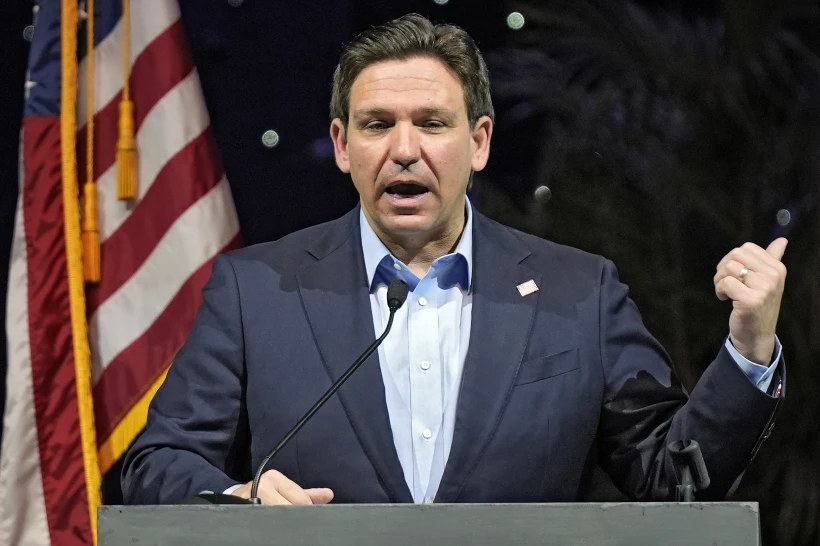
Name, image and likeness (NIL) compensation and the transfer portal in major college sports continue to perturb Florida’s Governor.
During comments at the University of South Florida College of Medicine in Tampa, Gov. Ron DeSantis reminisced about the way it used to be during the golden era of college football in Florida.
“It’s tough. I mean, with NIL and transferring and all this stuff,” DeSantis lamented. “It used to just be … all the Florida schools just kind of lock and load, (during) the ’80s and ’90s, even beyond that when you had the Urban Meyer years in Florida. And then it’s like, you know, particularly in the last five or 10 years, so much is going on. There’s a lot of moving parts.”
The Governor has called attention to the increased professionalization of amateur sports in recent years, including saying in 2024 that he wanted to work with other Governors to develop a regulatory “framework” because Congress wouldn’t do it.
DeSantis has griped about student athletes having too much leverage and about Florida programs in recent months on numerous occasions.

“I think this whole NIL may need some guardrails, and the transferring has gotten out of hand. You know, transferring once? Fine, you shouldn’t have to sit out. But to just treat it like a free agency where you don’t know who’s going to come back each year, I think that’s diluted college sports,” he said during other remarks in 2024.
“You get paid for name, image and likeness and stuff, which we supported in Florida. If people are going to make money off you, like, whatever,” DeSantis said in Waukee, Iowa, during his failed presidential campaign.
“But now it’s like, they sit out the bowl games and they do all this other stuff. … We’ve got to do something about that. I don’t know if that’s the right thing.”
-

 Motorsports2 weeks ago
Motorsports2 weeks agoNASCAR Weekend Preview: Autódromo Hermanos Rodríguez
-

 NIL3 weeks ago
NIL3 weeks agoPatrick Mahomes in OKC for WCWS, praises NiJaree Canady and Texas Tech
-

 NIL3 weeks ago
NIL3 weeks agoGreg Sankey fires jab at obstruction rule after controversial WCWS call in Texas vs. Texas Tech
-

 NIL3 weeks ago
NIL3 weeks agoReport
-
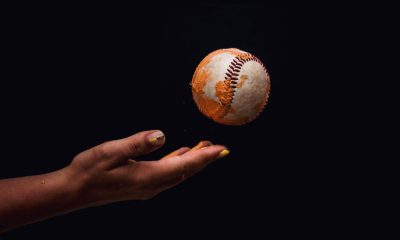
 NIL3 weeks ago
NIL3 weeks agoTexas Tech Pitcher’s $1M Deal Proves What’s Possible For Women
-

 Motorsports2 weeks ago
Motorsports2 weeks agoNASCAR Through the Gears: Denny Hamlin has gas, a border needs crossing, and yes, that’s a Hemi
-
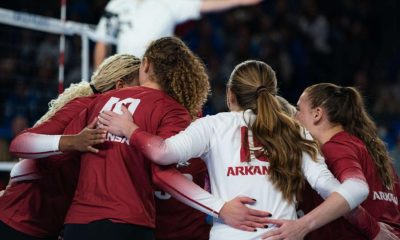
 Sports3 weeks ago
Sports3 weeks agoArkansas Volleyball reveals 2025 schedule dates
-

 Motorsports3 weeks ago
Motorsports3 weeks agoChase Elliott’s $12.6 billion backer made major Kyle Larson decision – Motorsport – Sports
-

 Health3 weeks ago
Health3 weeks agoBold and unapologetic
-

 NIL3 weeks ago
NIL3 weeks agoMahomes lauds NiJaree Canady, Texas Tech softball at WCWS finals



































